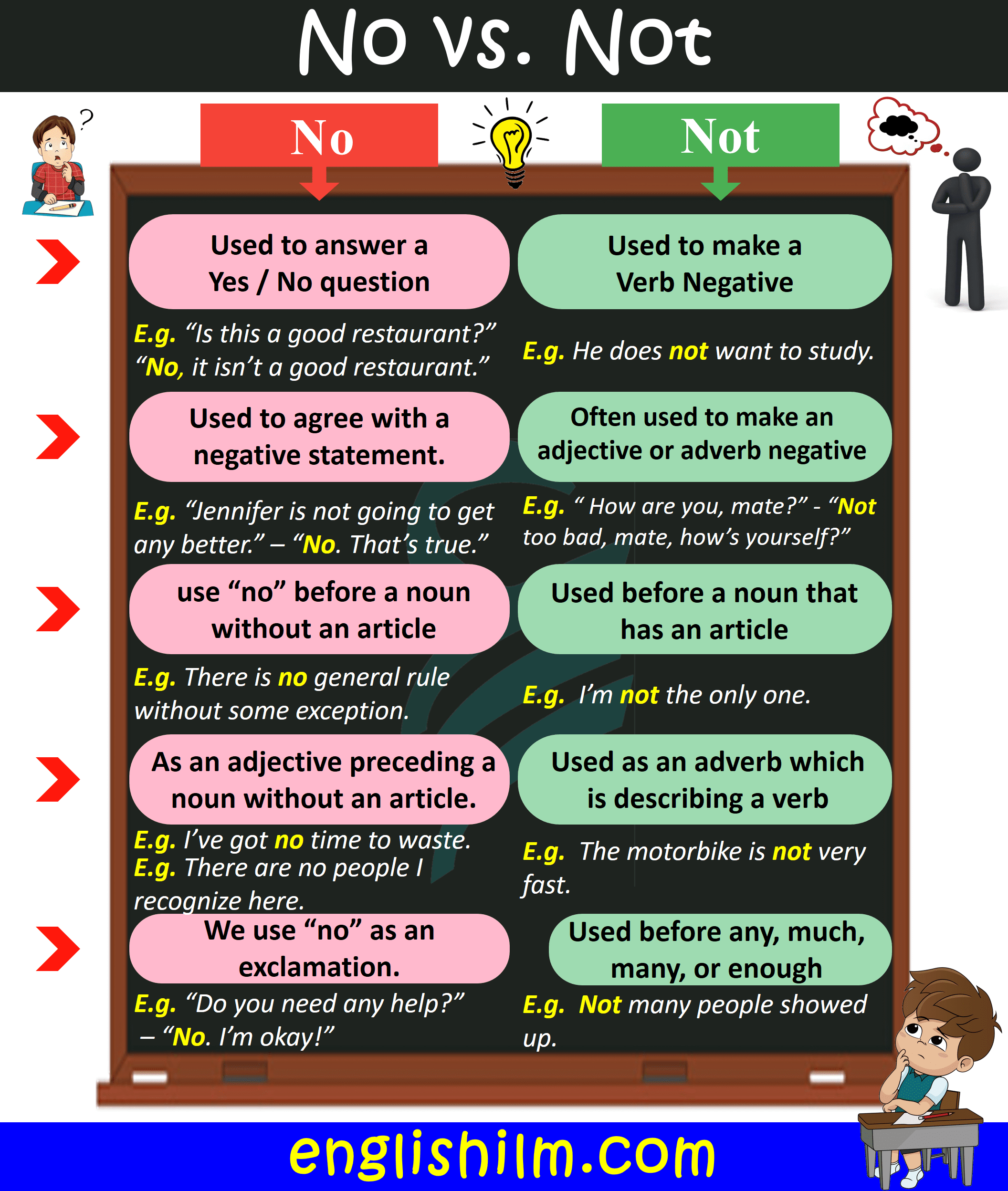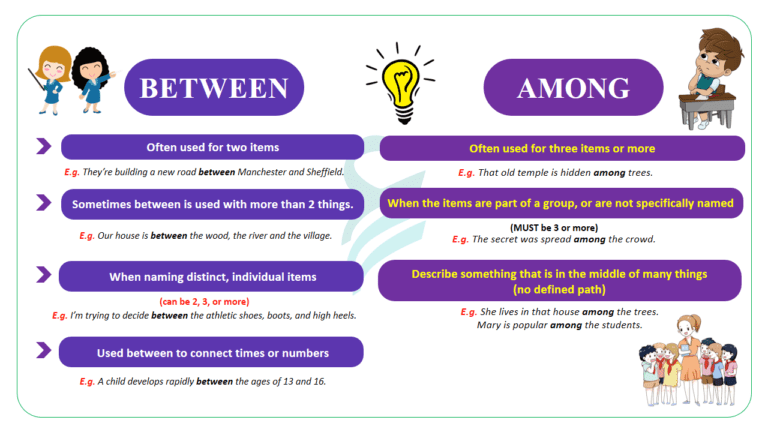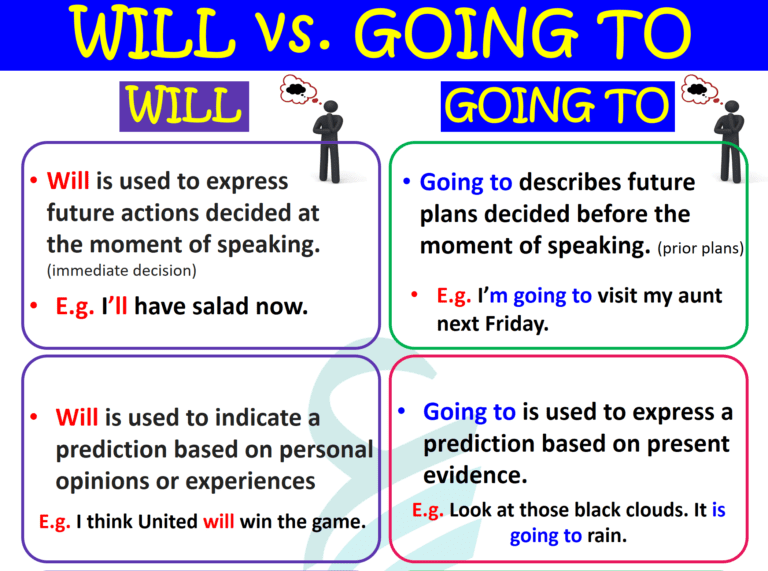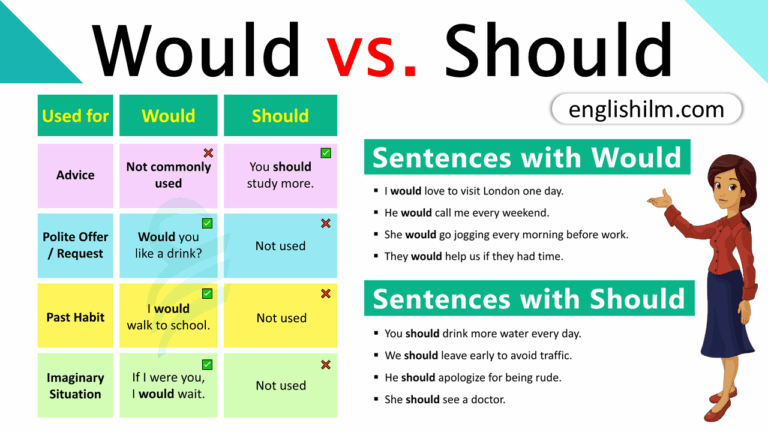In this blog post, you’ll learn the important differences between no and not, two commonly misused words in English grammar. Understanding how to use them correctly is crucial for constructing clear and accurate sentences. While “no” is often used with nouns to indicate absence, “not” is used to make a verb or adjective negative. Mastering these distinctions will help you improve both your speaking and writing skills.
Difference between No and Not
How to Use No
1. We use no to answer a Yes/No question.
- Is this a good restaurant?” – No, it isn’t a good restaurant.
2. We use “no” to agree with a negative statement.
- Jennifer is not going to get any better. – No. That’s true.
3. We use no before a noun without an article.
- There is no general rule without some exceptions.
4. We use no as an adjective preceding a noun without an article.
- I’ve got no time to waste.
- There are no people I recognize here.
5. We use no as an exclamation.
- Do you need any help? – No. I’m okay!
6. We use no before a verbal noun (ending in -ing).
- No smoking in this area!
- No playing in the parking area!
How to Use Not
1. We use not before a noun that has an article.
- I’m not the only one.
2. We use not before any, much, many, or enough.
- Not many people showed up.
- There’s not much food in the house.
3. We use “not” to make a verb negative.
- He does not want to study.
4. We use not as an adverb, which is describing a verb.
- The motorbike is not very fast.
5. We often use not to make an adjective or adverb negative.
- How are you, mate?—Not too bad, mate, how’s yourself?
6. We often use not in short replies with a number of verbs.
- Is it ready? — I’m afraid not.
- Will she be there? — I hope not.
No vs. Not Infographic
Read More






